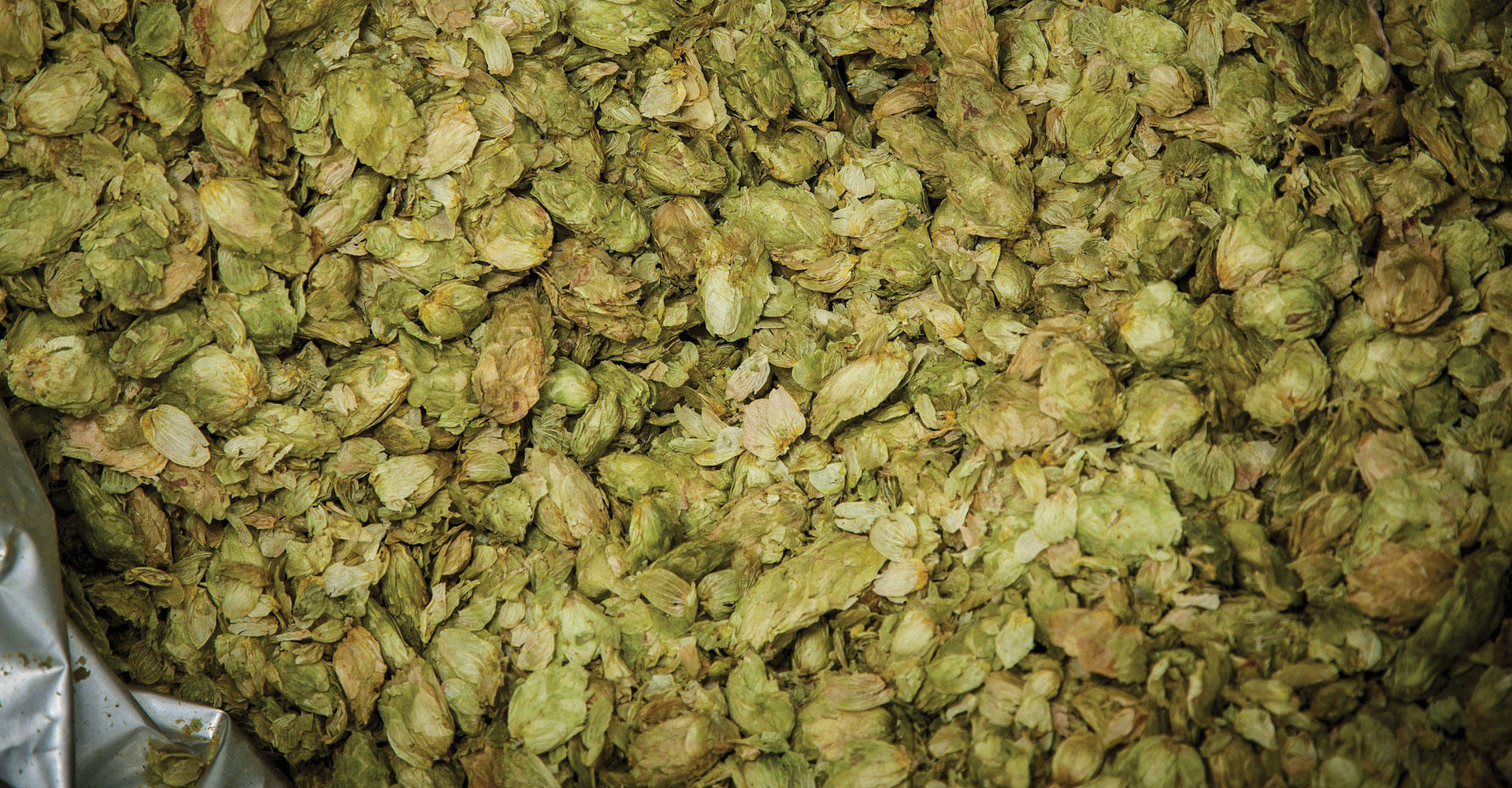
Hops have been called the spice of beer, and the analogy is apt: They have flavor and aroma qualities that can evoke tropical fruit just as easily as they can a pine forest. One hallmark of a skilled brewer is his or ability to add just the right hops at just the right times to achieve the desired profile.
It’s only somewhat recently, however, that hops have become as prized for their organoleptic properties (aspects we can experience via the senses) as they are for their bittering potential. Indeed, breeding programs historically aimed to improve alpha-acid levels while keeping cultivars classically “hoppy,” which usually meant keeping the herbal and floral aromatics so prized in noble varieties.
Boiling hops in water or wort transforms alpha acids into iso-alpha acids, which deliver bitterness. And the degree to which this happens is known as hops utilization. Hops utilization is the fraction of the available alpha acids that both (1) transform into isomerized forms and (2) remain in the finished beer, so the number is always less than 100 percent. In most cases it’s closer to 25 percent. An incredible number of variables influence this number, and the following tend to enhance utilization:
- Hotter water
- More vigorous boiling
- Longer boil time
- Larger boil volume
- Higher wort pH
- Lower wort gravity
- Longer post-boil chill times
- Smaller amounts of trub material
Logically, negating the above conditions leads to lower hops utilization.
We usually tend to think more in terms of IBUs than we do utilization numbers, and the latter directly influences the former. One International Bitterness Unit (IBU) is defined as one milligram of iso-alpha acid per liter of beer, sometimes also expressed as one part per million (a liter of water is one million milligrams, and beer is mostly water). Ergo, the better the hops utilization (more alpha acids isomerized), the higher the IBU value. Stated equivalently, you can use less hops material (or a lower alpha-acid hops) to achieve a given IBU level when you improve your utilization.
How does this translate into practical advice? Well, high-elevation brewers, for example, may consider adding a few minutes to their boil times to make up for the fact that water boils at a lower temperature. Extract brewers who brew concentrated wort can reserve a portion of the extract for the last 15 minutes of the boil to take advantage of the utilization benefits of low-gravity wort. And brewers who perform hot whirlpools or hop stands may want to reduce their 60-minute bittering charge since all of those hot-wort hops will continue to contribute bitterness to the final beer.
The only way to actually know a beer’s bitterness is to measure the IBUs directly using a method standardized by the American Society of Brewing Chemists. It involves separating iso-alpha acids out of solution and measuring their levels using an ultraviolet spectrometer, a procedure beyond the reach of most hobbyists. But brewing software such as BeerSmith offers reasonable estimates based on established formulae. And for all but the most obsessed brewers, such estimates are usually enough.
No comments:
Post a Comment